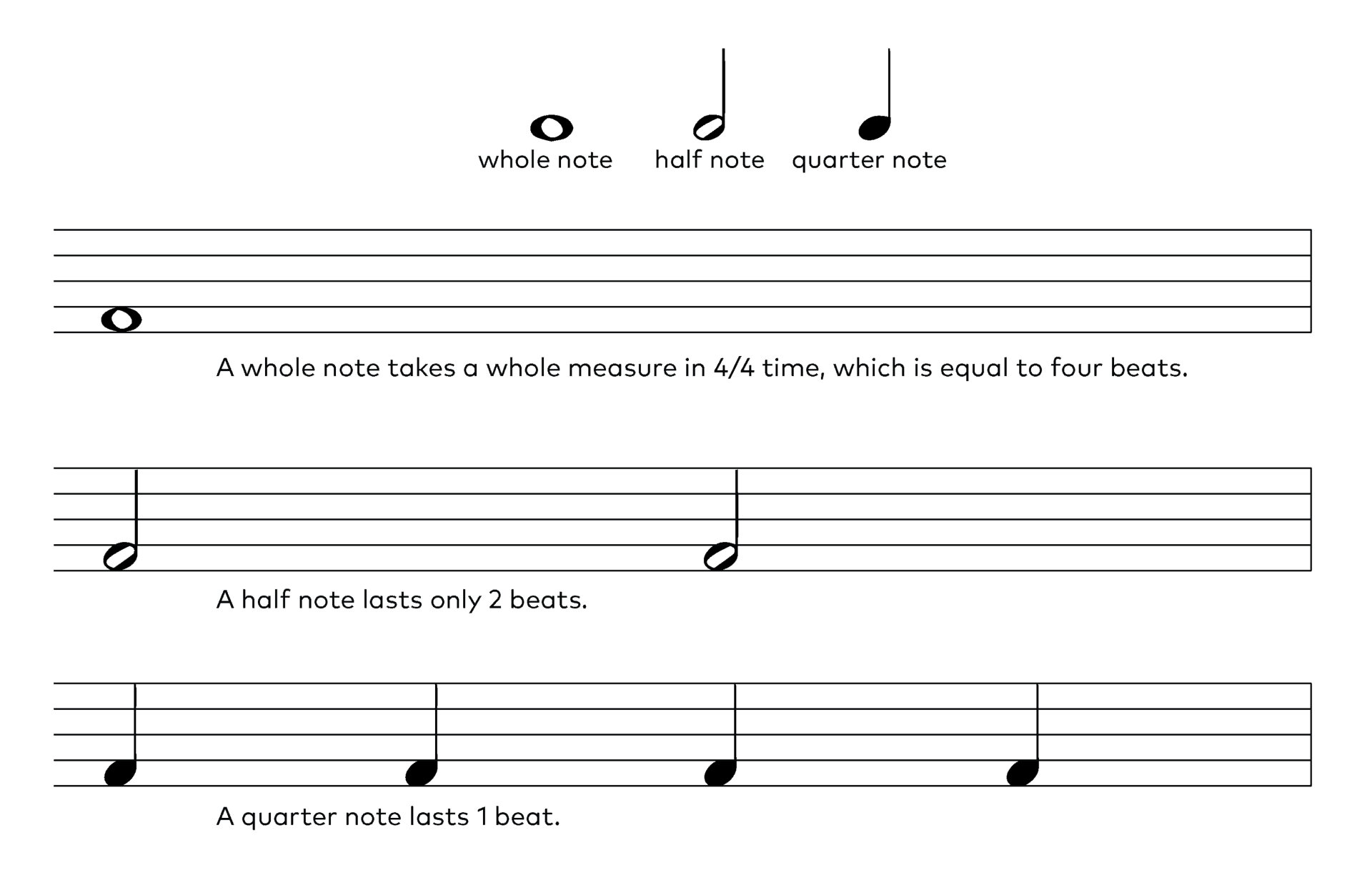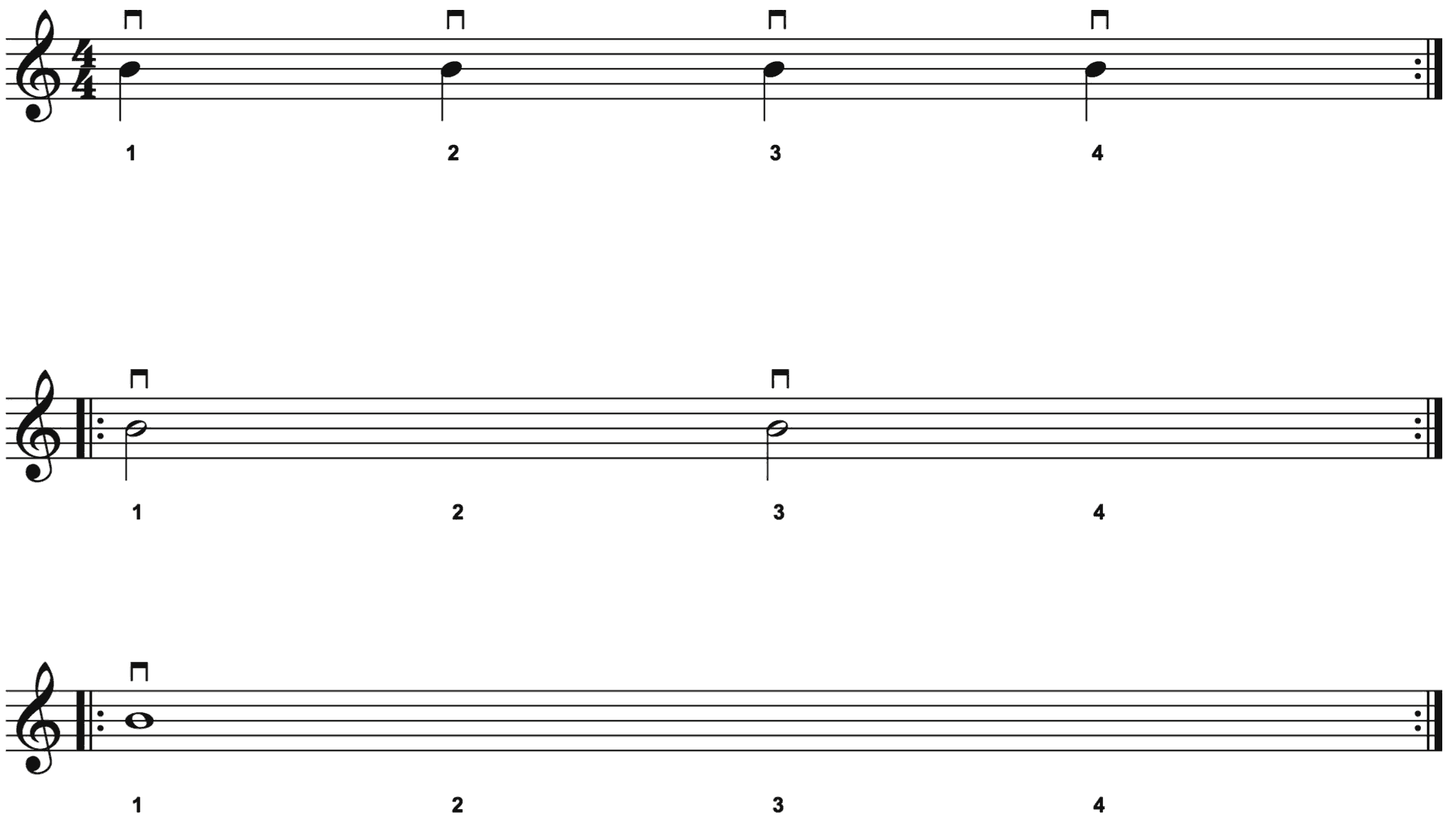Rhythm is a crucial part of music. Knowing the basic rhythms such as quarter notes, eighth notes, and rests will give you a deeper understanding of the music you hear. So the first thing you need to know is the time signature.
Time Signature
You will find the time signature at the beginning of a piece of sheet music as some kind of fraction or a C. This tells us how many beats there are in a measure and which note value represents one beat. The most common time signature is 4/4, sometimes written as a C.

Whole, Half and Quarter Notes
You should be able to understand the differences between note values Different notes cover different lengths of time, take a look at what each symbol stands for:

So now it's time to put what you've learned into practice. The pic shows an easy exercise: count along 1 2 3 4, but only clap (or play the B string on the guitar) when there's also a note written. For a better learning effect, repeat every measure multiple times without a pause in between (1 2 3 4 1 2 3 4 1 2 3 4…). It is crucial, that you count at a steady pace, so don't get faster or slower during it!
